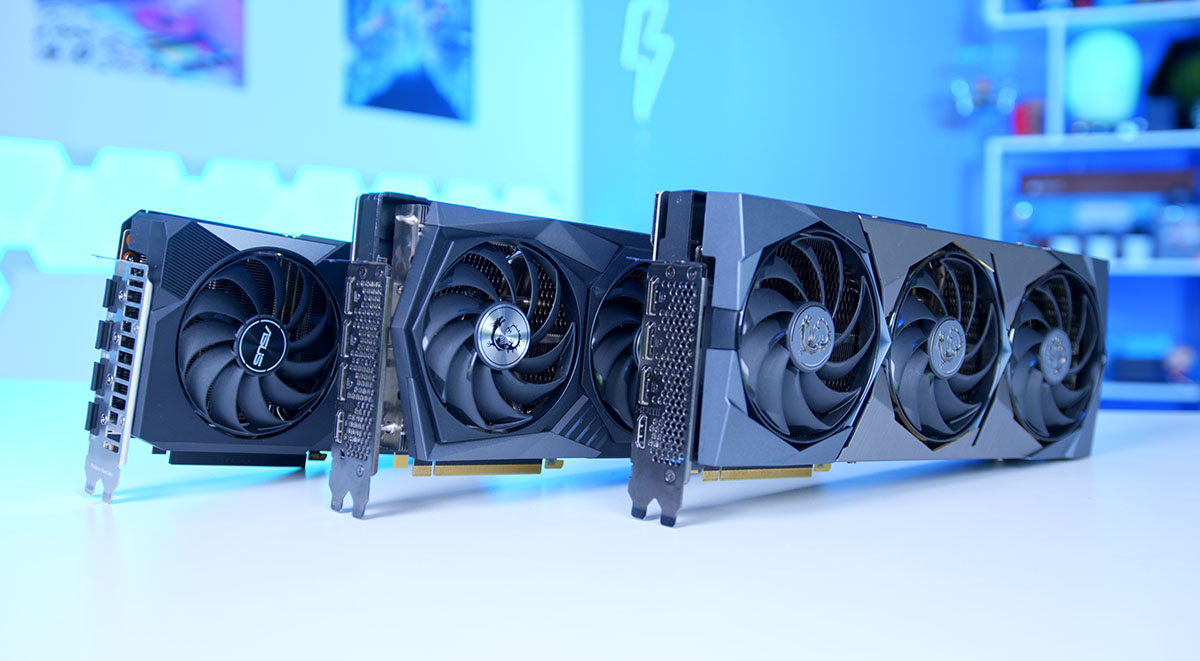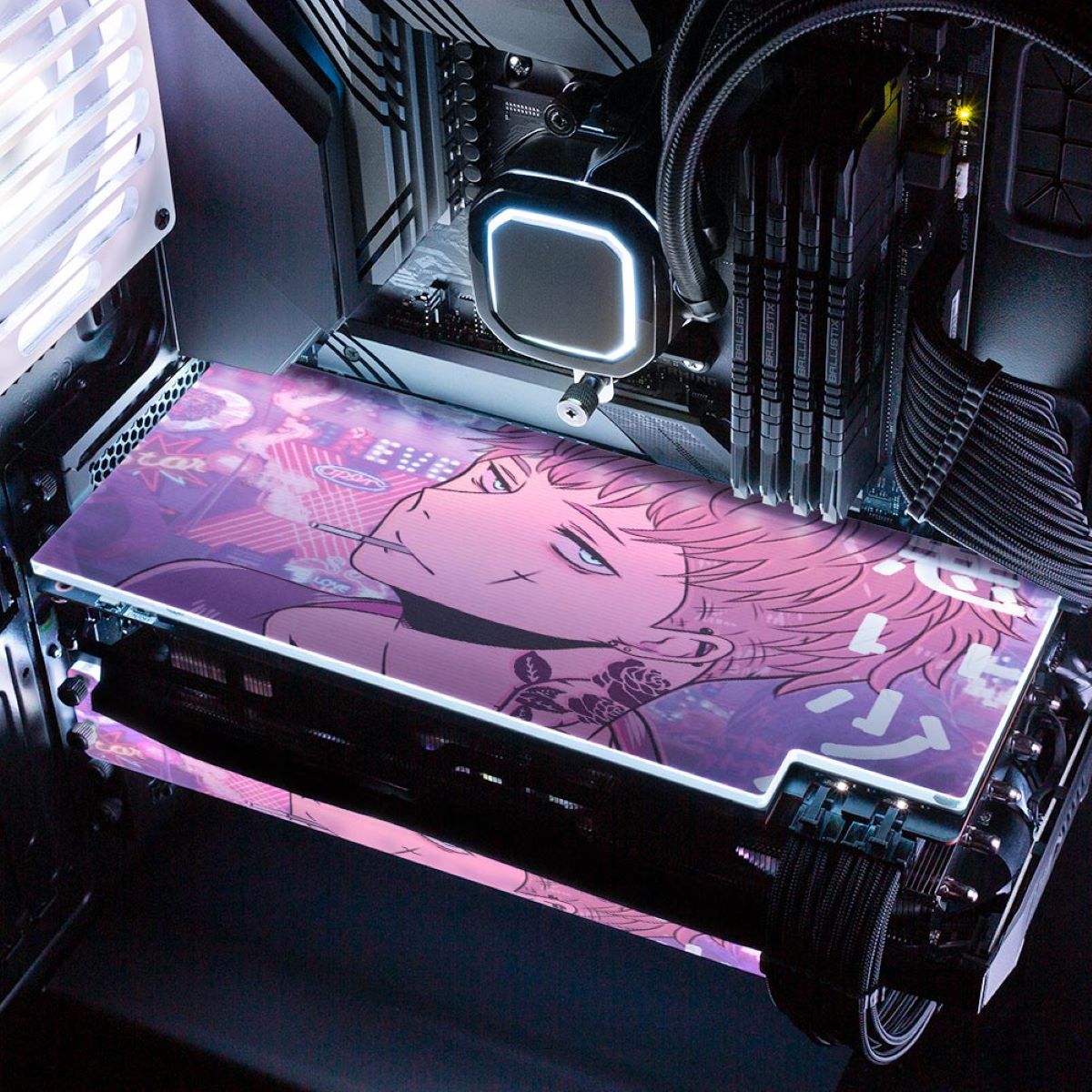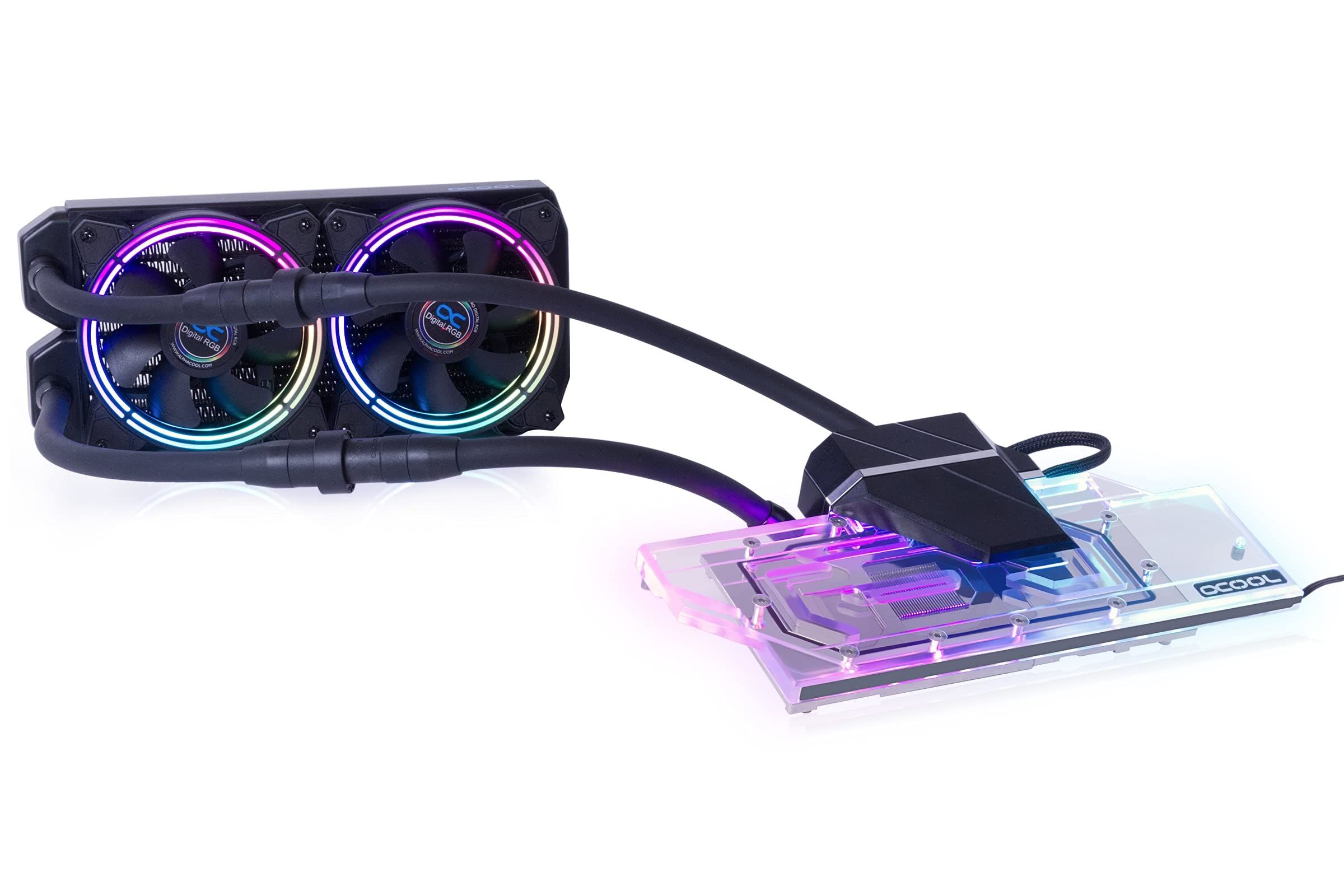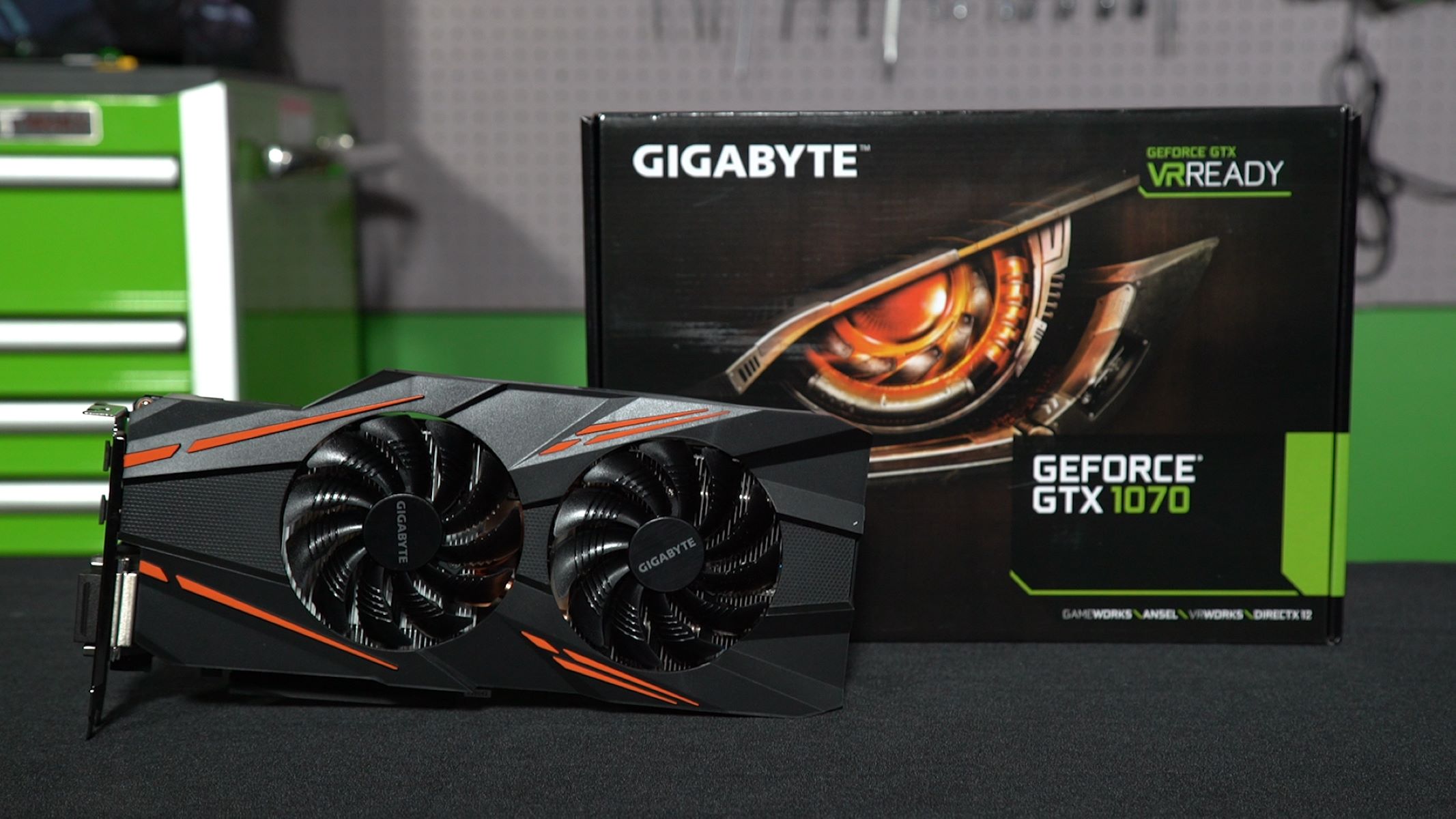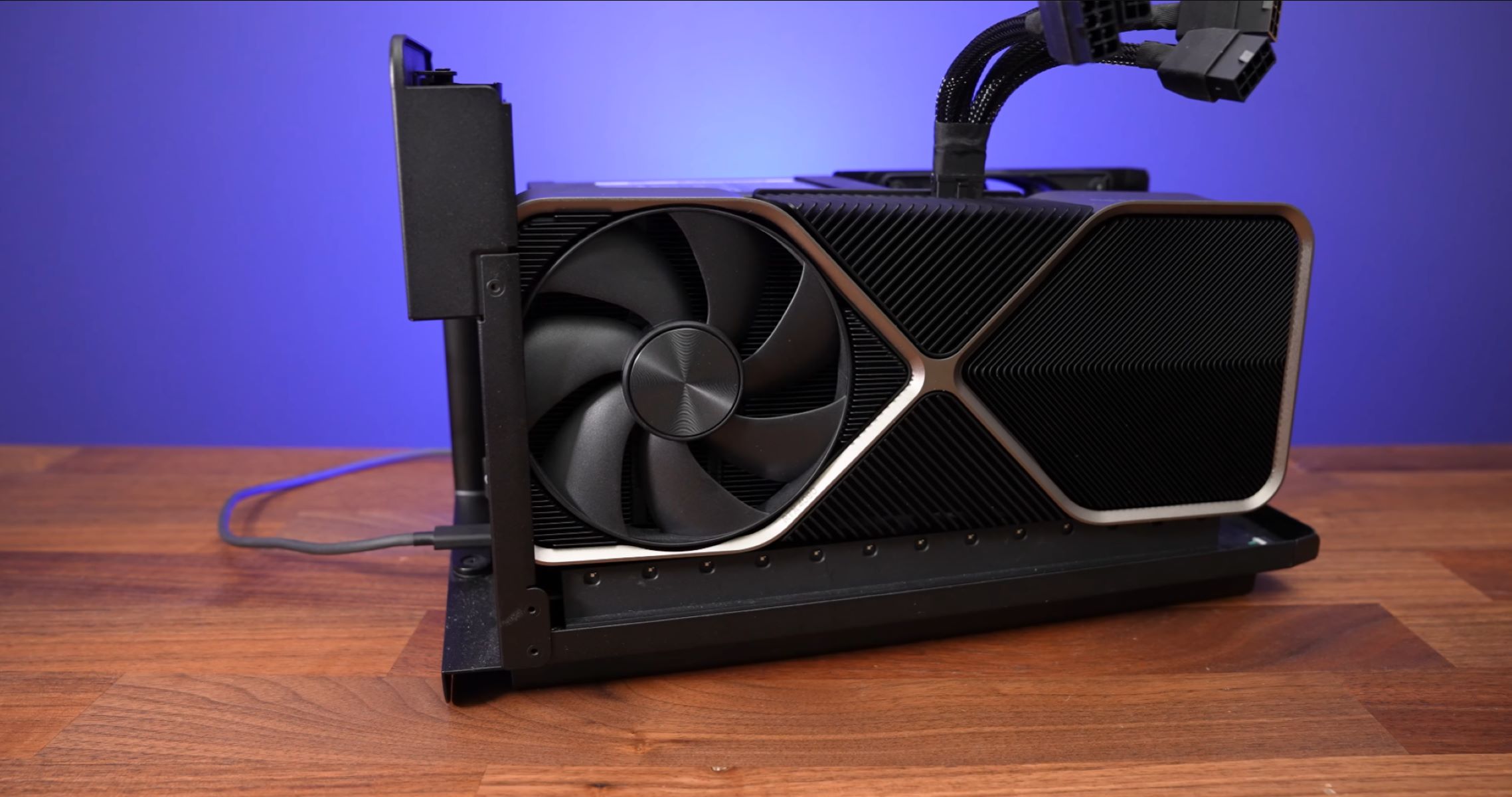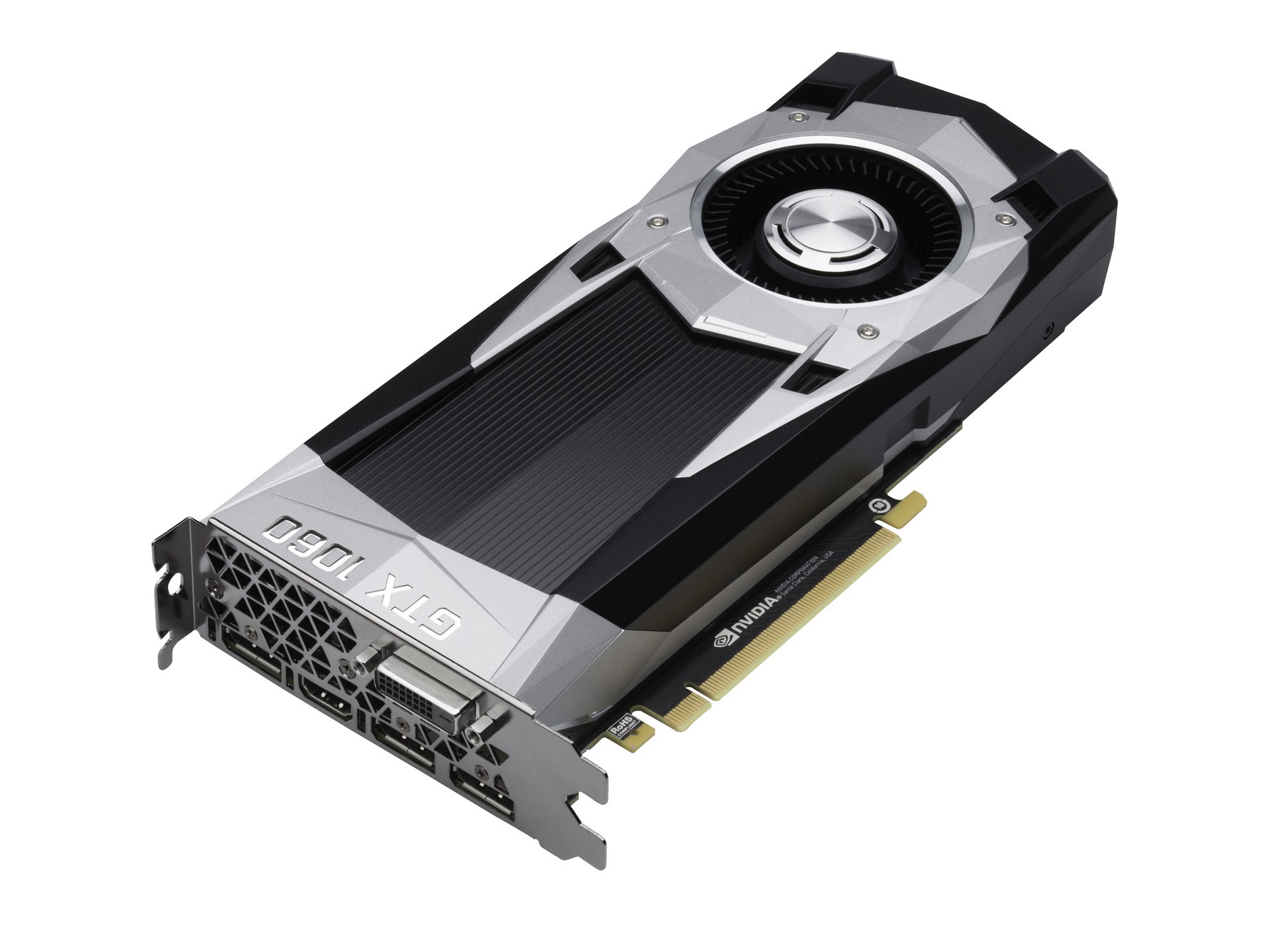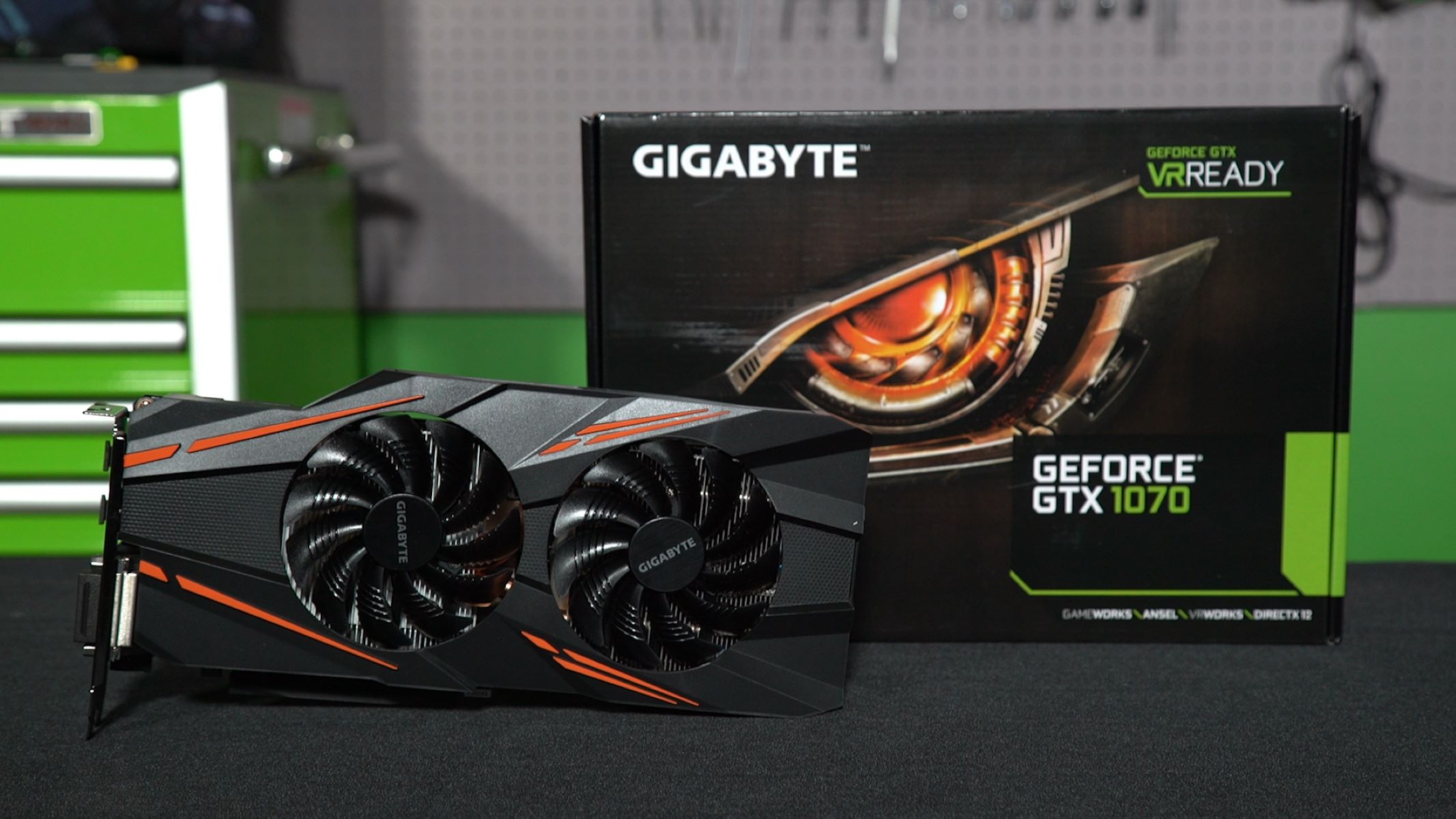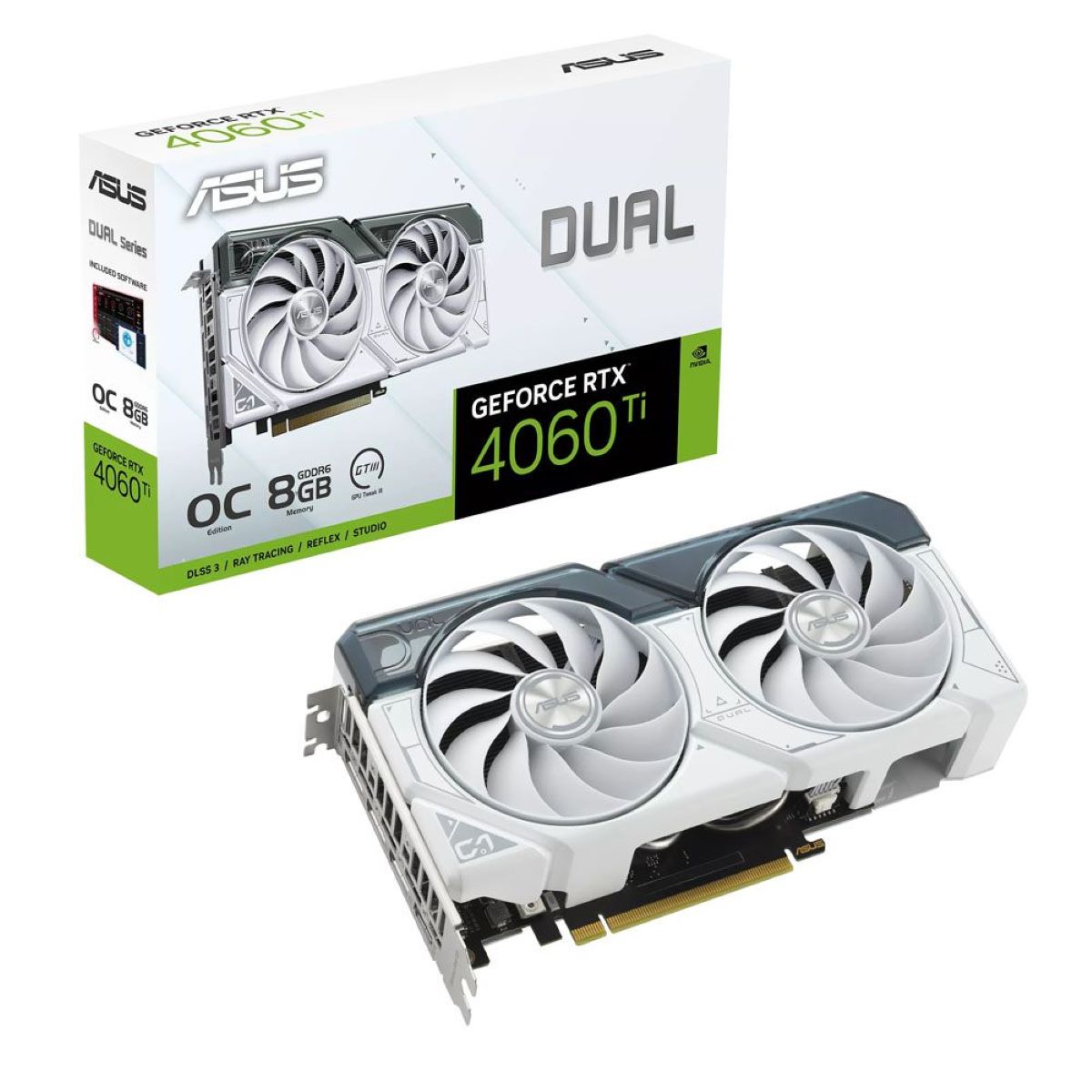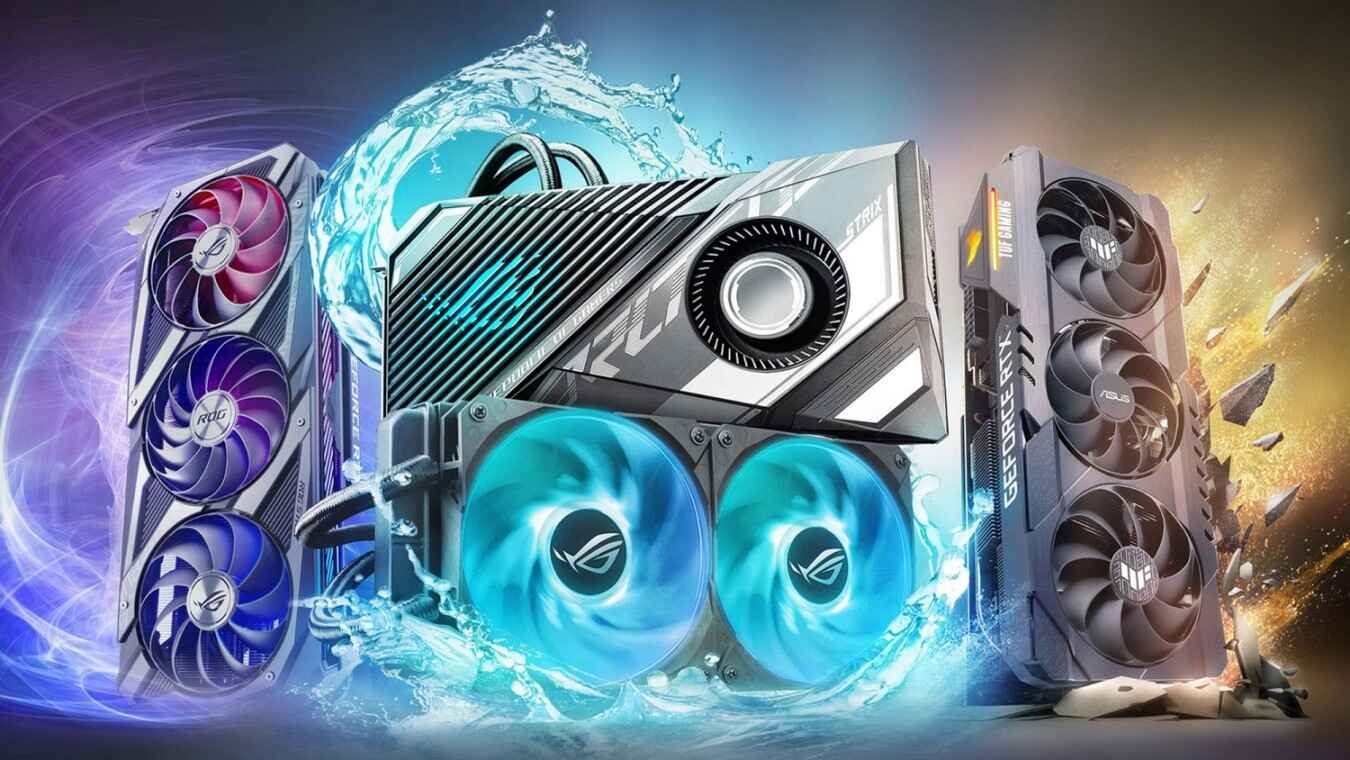Introduction
When it comes to the world of gaming, there are many factors that contribute to the overall gaming experience. From high-definition graphics to fluid gameplay, every element plays a vital role in creating an immersive gaming environment. One of the integral components that often goes unnoticed but plays a key role in enhancing the visual appeal and performance of games is the Graphics Processing Unit (GPU).
The GPU, also known as a graphics card, is a specialized electronic circuit that is responsible for rendering and processing the visual elements of a game. It works in conjunction with the Central Processing Unit (CPU) to handle the complex calculations and operations required to display lifelike graphics and deliver a seamless gaming experience.
While the CPU performs a wide range of tasks, including handling game logic, AI computations, and physics simulations, the GPU is specifically designed to accelerate the creation and rendering of images, animations, and visual effects. It is an essential component for any avid gamer looking to enjoy visually stunning games with smooth frame rates.
The purpose of this article is to delve into the various roles and importance of the GPU in gaming. We will explore how it works in conjunction with the CPU, its role in rendering graphics, calculating physics, handling shader effects, and its significance in virtual reality (VR) gaming. Additionally, we will discuss the impact of the GPU on overall gaming performance and highlight some optimization techniques to enhance the gaming experience.
So, if you’ve ever wondered what makes your favorite games look so visually appealing, or how your GPU contributes to the immersive world of virtual reality, read on to discover the fascinating world of GPU technology in gaming.
Definition of GPU
In order to understand the importance of the Graphics Processing Unit (GPU) in gaming, it is necessary to have a clear understanding of what a GPU is and how it differs from the Central Processing Unit (CPU).
The GPU, also referred to as a graphics card, is a specialized electronic circuit that is primarily responsible for rendering and processing the visual elements of a game. It is designed to handle the complex calculations required to display lifelike graphics, animations, and visual effects. In simpler terms, the GPU is the component that takes the game’s 3D models, textures, and shaders and converts them into the final images that are displayed on your monitor.
Unlike the CPU, which is a general-purpose processor that handles a wide range of tasks including game logic and AI computations, the GPU is specifically optimized for graphics-related operations. It consists of thousands of small processing cores that work in parallel to perform calculations at an incredibly fast rate. This parallel processing capability allows the GPU to handle large amounts of data simultaneously, resulting in smooth and realistic visual rendering.
Modern GPUs are equipped with their own dedicated RAM, known as Video RAM (VRAM), which stores the graphical data required for rendering images. The VRAM acts as a high-speed buffer between the GPU and the CPU, allowing for quick data transfer and reducing the processing burden on the CPU.
Gaming GPUs have evolved significantly over the years, with advancements in transistor technology, architecture, and memory bandwidth. They have become increasingly powerful, capable of delivering high resolutions, realistic textures, and complex visual effects. The GPU market offers various options with different performance levels, catering to both casual gamers and enthusiasts seeking cutting-edge graphics capabilities.
In summary, the GPU is a specialized electronic circuit that works in tandem with the CPU to render and process the visual elements of a game. It is optimized for graphics-related operations, consisting of thousands of processing cores that perform calculations at a rapid pace. Through the dedicated Video RAM, the GPU ensures smooth and realistic visual rendering, enhancing the overall gaming experience.
Importance of GPU in Gaming
The Graphics Processing Unit (GPU) plays a crucial role in the world of gaming, offering several key benefits that significantly enhance the gaming experience. Whether you’re exploring vast open worlds, engaging in intense battles, or enjoying visually stunning cinematic sequences, the GPU is the driving force behind delivering breathtaking graphics and smooth gameplay.
One of the primary reasons the GPU is essential in gaming is its ability to render high-quality graphics. Games have come a long way in terms of visual fidelity, offering realistic environments, detailed character models, and lifelike animations. The GPU’s immense processing power allows it to handle the complex calculations required for rendering these intricate details in real-time. This results in visually stunning landscapes, vibrant colors, and fluid character movements, contributing to a more immersive and visually engaging gaming experience.
In addition to graphics, the GPU also plays a significant role in determining the frame rate, or the number of frames per second (FPS) displayed. Higher FPS provides smoother gameplay, allowing for faster reactions and a more responsive gaming experience. The GPU’s ability to process and render frames quickly is crucial in achieving a high frame rate, ensuring that the game remains smooth and responsive even in demanding situations.
Another key aspect of gaming is the presence of visual effects, such as realistic lighting, shadows, and particle effects. These effects not only enhance the overall visual quality but also contribute to the atmosphere and immersion of the game world. The GPU’s dedicated processing power and specialized architectures enable it to handle these effects efficiently, making the virtual world come alive with dynamic and captivating visuals.
Furthermore, the GPU’s importance extends beyond traditional gaming experiences. With the rise of virtual reality (VR), the GPU has become an integral component in delivering immersive and realistic VR gaming. VR relies heavily on rendering high-resolution graphics with low latency to maintain the illusion of presence. The GPU’s parallel processing capabilities and dedicated VRAM help deliver the necessary performance to support VR headsets, ensuring smooth and immersive VR gameplay.
In summary, the GPU plays a vital role in gaming by delivering high-quality graphics, maintaining smooth frame rates, and enabling the rendering of realistic visual effects. It is a cornerstone of the gaming experience, whether you’re exploring vast open worlds, engaging in intense battles, or immersing yourself in the world of virtual reality. The continuous advancements in GPU technology push the boundaries of gaming visuals, providing gamers with increasingly breathtaking and immersive experiences.
Graphics Processing Unit (GPU) vs Central Processing Unit (CPU)
When it comes to gaming, two crucial components that work together to provide a seamless experience are the Graphics Processing Unit (GPU) and the Central Processing Unit (CPU). While both are essential, they have different roles and functionalities that are tailored to specific tasks.
The CPU, often referred to as the “brain” of the computer, is a general-purpose processor that handles a wide range of tasks. In gaming, the CPU is responsible for tasks such as game logic, AI computations, and physics simulations. It executes instructions, performs calculations, and manages the overall operations of the system.
On the other hand, the GPU is a specialized processor designed specifically for handling graphics-related operations. Its main purpose is to render and process the visual elements of a game. The GPU consists of numerous smaller processing cores that work in parallel, allowing for fast and efficient calculations required for rendering detailed 3D models, textures, and visual effects.
While both the CPU and GPU contribute to the gaming experience, they excel in different areas. The CPU’s strength lies in its ability to handle complex computations and multi-threaded tasks. It is responsible for running the game’s main code, making decisions, and carrying out essential calculations. A powerful CPU can positively impact game performance, particularly in games that rely heavily on AI, physics simulations, or complex algorithms.
On the other hand, the GPU’s specialized architecture enables it to handle massive amounts of graphical data and perform calculations related to graphics rendering at lightning-fast speeds. It excels at handling parallel computations, making it ideal for the complex calculations required for rendering realistic graphics, physics simulations, and visual effects.
It’s important to note that while the CPU and GPU can work independently, they are designed to work in tandem. In most gaming systems, the CPU and GPU communicate with each other to ensure efficient data transfer and coordination. The CPU tells the GPU what needs to be rendered, while the GPU handles the actual rendering process.
As technology advances, the line between the roles of the CPU and GPU continues to blur. Some CPUs now include integrated GPUs, which provide a basic level of graphics processing. However, for demanding gaming experiences and high-end graphics, a separate and dedicated GPU is typically necessary to deliver the best performance and visual quality.
In summary, the CPU and GPU both play critical roles in gaming, with the CPU handling general-purpose tasks and the GPU specializing in graphics processing. While the CPU excels in computations and multi-threaded tasks, the GPU’s parallel processing capabilities make it ideal for rendering lifelike graphics and handling visual effects. The collaboration between the CPU and GPU is essential in creating a seamless and immersive gaming experience.
GPU’s Role in Rendering Graphics in Games
One of the primary responsibilities of the Graphics Processing Unit (GPU) in gaming is rendering graphics. The GPU is designed to handle the complex calculations required to transform 3D models, textures, and visual effects into the final images that are displayed on your screen. Let’s explore the various aspects of the GPU’s role in rendering graphics and how it contributes to the overall visual quality of games.
First and foremost, the GPU is responsible for transforming 3D models into 2D images, a process known as rasterization. This involves calculating the color, lighting, and shading of each individual pixel on the screen. The GPU’s immense processing power and parallel architecture allow it to handle millions of pixels simultaneously, resulting in smooth and highly-detailed images.
In addition to rasterization, the GPU also performs texture mapping, which involves applying detailed textures onto 3D models. Textures add depth, realism, and surface details to objects in the game world. The GPU’s dedicated texture units are optimized to handle the precise mapping and blending of textures, ensuring that game environments and characters appear lifelike and immersive.
Visual effects play a significant role in enhancing the overall visual quality of games. The GPU is responsible for rendering effects such as realistic lighting, shadows, particle systems, and post-processing effects. By using shaders, which are small programs that run on the GPU, these effects can be calculated and applied to the scene in real-time. The GPU’s parallel processing capabilities allow for the efficient handling of these complex calculations, resulting in visually stunning and dynamic game worlds.
An important aspect of rendering graphics is anti-aliasing, which helps reduce jagged edges and smooth out curved lines in games. Anti-aliasing techniques, such as MSAA (Multisample Anti-Aliasing) and FXAA (Fast Approximate Anti-Aliasing), are designed to enhance the visual quality by reducing jagged edges and creating smoother transitions between different elements of the game. By performing advanced calculations and smoothing techniques, the GPU ensures that the final images appear crisp and visually appealing.
Furthermore, the GPU’s role in rendering graphics extends to handling advanced rendering techniques such as physically-based rendering (PBR) and global illumination. These techniques simulate how light interacts with different materials and surfaces, resulting in more realistic reflections, shadows, and overall lighting conditions in games. The GPU’s powerful processing capabilities enable it to calculate complex lighting equations and simulate the behavior of light in real-time, contributing to a more immersive and visually stunning gaming experience.
In summary, the GPU plays a vital role in rendering graphics in games. From transforming 3D models to applying textures, calculating lighting and shadows, and handling advanced rendering techniques, the GPU’s parallel processing power and specialized architecture ensure that games look visually stunning and lifelike. By offloading the complex calculations required for rendering graphics onto the GPU, game developers can deliver visually immersive experiences that captivate and engage players.
GPU’s Role in Calculating Physics in Games
While graphics are a significant aspect of gaming, realistic physics simulations are equally crucial in creating an immersive gaming experience. The Graphics Processing Unit (GPU) plays a critical role in calculating physics in games, working in conjunction with the Central Processing Unit (CPU) to accurately simulate the behavior of objects, collisions, and movement within the game world. Let’s explore the various aspects of the GPU’s role in calculating physics and how it enhances the gameplay experience.
Physics simulations in games involve modeling real-world forces, such as gravity, friction, inertia, and collision detection. These calculations are essential to create realistic movement, interactions, and reactions between objects in the game world. Traditionally, these physics calculations were mostly handled by the CPU, but with the advent of powerful GPUs, the processing load has been increasingly offloaded to the GPU for optimal performance.
The GPU’s parallel processing architecture, combined with its immense computational power, makes it particularly well-suited for handling physics calculations. By using techniques such as parallel processing, stream computing, and general-purpose computing on GPUs (GPGPU), the GPU can perform complex physics calculations simultaneously on multiple objects or particles. This allows for faster and more accurate simulations in real-time, resulting in more immersive and realistic gameplay.
In games that involve large-scale environments or simulations with numerous objects and particles, the GPU’s ability to handle parallel processing becomes even more crucial. Whether it’s simulating the movement of hundreds of characters in a crowd or calculating the behavior of thousands of particles in a fluid simulation, the GPU can accelerate these computations, significantly enhancing the realism and complexity of the game world.
Furthermore, the GPU’s role in calculating physics extends beyond traditional simulations. Modern GPUs can also handle more advanced physics techniques, such as cloth simulations, soft-body physics, and dynamic destruction. These techniques simulate the behavior of deformable objects, dynamic cloth, and destructible environments, adding an extra layer of realism and interactivity to the game world. By efficiently calculating the complex physics involved in these simulations, the GPU allows for more dynamic and immersive gameplay experiences.
Collisions are another crucial aspect of physics simulations in games. The GPU, in collaboration with the CPU, handles collision detection and response. Whether it’s detecting a player character interacting with the environment or objects colliding with each other, the GPU’s computational capabilities enable fast and accurate collision calculations. This ensures that objects react realistically to collisions, providing a more engaging and immersive gameplay experience.
In summary, the GPU plays a vital role in calculating physics in games. Its parallel processing architecture and immense computational power allow for fast and accurate physics simulations, ensuring realistic movement, interactions, and reactions in the game world. By offloading physics calculations to the GPU, game developers can create more immersive and dynamic gameplay experiences, enhancing the overall enjoyment and realism of the gaming experience.
GPU’s Role in Handling Shader Effects in Games
One of the key elements that contribute to the visual appeal and immersive experience of modern games is the use of shader effects. These effects, created through the use of specialized programs called shaders, add depth, realism, and artistic flair to game visuals. The Graphics Processing Unit (GPU) plays a pivotal role in handling these shader effects, allowing for stunning and dynamic graphics. Let’s explore the various aspects of the GPU’s role in handling shader effects and its impact on the gaming experience.
Shaders are small programs that run on the GPU and are responsible for calculating and defining how light interacts with objects in a game. There are different types of shaders, each with its own specific function. Vertex shaders manipulate the 3D geometry of objects, such as adjusting their position and transforming them based on camera view. Fragment shaders, also known as pixel shaders, control the color, texture, and lighting of individual pixels on the screen.
The GPU’s immense processing power and parallel architecture make it ideal for executing shader programs. By leveraging the GPU’s multiple processing cores and high-speed memory, shader effects can be calculated and applied to game visuals in real-time. This allows for the creation of dynamic and visually captivating effects, enhancing the overall immersion of the game world.
Shader effects enable a wide range of visual enhancements in games. They can simulate realistic lighting conditions, such as dynamic shadows or global illumination, by calculating how light interacts with objects. This adds depth, realism, and visual fidelity to game environments. Additionally, shaders can create intricate material textures and reflective surfaces, mimicking the appearance of various materials like metal, water, or glass. By manipulating colors, textures, and lighting, shaders breathe life into game visuals and create stunning visual effects.
Furthermore, shaders are instrumental in creating special effects in games. They can generate particle systems for simulating explosions, fire, smoke, or other dynamic elements. Shaders can be used to create post-processing effects like motion blur, depth of field, or bloom, which enhance the overall visual quality and cinematic feel of the game. Additionally, shaders have the power to create stylized visuals, such as cel-shading or pixelated effects, giving games a unique and artistic look.
Real-time rendering of shader effects requires significant computational power, which the GPU excels at providing. The parallel structure of the GPU allows for simultaneous execution of shader programs on multiple pixels, enabling efficient and fast calculations. This results in smooth and fluid rendering of complex and visually stunning effects in games, enhancing the overall gaming experience.
In summary, the GPU plays a vital role in handling shader effects in games. Through its immense processing power and parallel architecture, shader programs can be executed in real-time, allowing for the creation of stunning and dynamic graphics. Shaders enable various visual enhancements, from realistic lighting and textures to special effects and post-processing effects. The GPU’s ability to handle shader effects contributes to the overall immersion, visual fidelity, and artistic appeal of modern games.
Importance of GPU in Virtual Reality (VR) Gaming
Virtual Reality (VR) gaming has revolutionized the way we experience and interact with video games, allowing us to fully immerse ourselves in virtual worlds. The Graphics Processing Unit (GPU) plays a crucial role in delivering a seamless and immersive VR gaming experience, ensuring realistic visuals, smooth frame rates, and low latency. Let’s explore the importance of the GPU in VR gaming and the specific challenges it addresses.
One of the primary challenges in VR gaming is rendering immersive and realistic visuals. VR requires rendering high-resolution graphics for each eye, accounting for the stereoscopic effect necessary to create depth perception. This places a heavy computational load on the GPU. The GPU’s processing power is essential for handling the intricate calculations required to render the detailed 3D models, textures, and visual effects necessary to create lifelike virtual worlds in real-time.
In addition to rendering high-resolution graphics, VR gaming demands a consistently high frame rate to maintain a smooth and comfortable experience. Any drops in frame rate can lead to motion sickness and reduce the sense of immersion. The GPU’s parallel processing capabilities optimize the rendering process, allowing for the generation of high frame rates that match the refresh rates of VR headsets. This ensures that the visual experience in VR gaming remains fluid and free from stuttering or lag, enhancing the sense of presence and realism.
Low latency is another crucial factor in VR gaming to minimize the delay between a user’s movement and the corresponding visual response. Even slight delays in rendering and displaying the image can break the illusion of presence and cause discomfort. The GPU’s efficient processing ensures that the visuals are rendered and displayed with low latency, reducing the delay and maintaining the synchronization between the user’s movements and the in-game world.
VR gaming also relies heavily on realistic physics simulation to provide accurate interactions between the user and the virtual environment. The GPU’s parallel processing power allows for advanced physics calculations, ensuring objects behave realistically, and collisions and interactions are accurately rendered. This enhances the sense of immersion and interactivity in VR gaming experiences.
Furthermore, the GPU’s dedicated Video RAM (VRAM) contributes to the success of VR gaming. VRAM acts as a high-speed buffer for storing and accessing the graphical data required for rendering VR content. The GPU’s efficient utilization of VRAM facilitates quick data transfers and reduces the strain on the CPU, leading to improved performance and responsiveness.
Beyond graphics and performance, the GPU also plays a role in VR-specific technologies such as eye tracking and foveated rendering. Eye tracking allows for more efficient processing by dynamically adjusting the level of detail and resolution based on the user’s gaze. This reduces the GPU’s workload and enhances the overall performance of VR gaming. Foveated rendering, which concentrates rendering resources on the user’s focal point, also relies on the GPU’s processing power and parallel architecture to render high-quality visuals where they matter the most.
In summary, the GPU is of utmost importance in VR gaming. It handles the demanding tasks of rendering high-resolution graphics, maintaining smooth frame rates, minimizing latency, and simulating realistic physics. The GPU’s parallel processing power, efficient memory management, and optimization techniques contribute to the seamless and immersive VR gaming experience, allowing users to step into virtual worlds with stunning visuals, fluid movement, and minimal delay.
GPU’s Contribution to Overall Gaming Performance
When it comes to gaming performance, the Graphics Processing Unit (GPU) plays a crucial role in delivering smooth gameplay, high frame rates, and stunning visuals. The GPU’s immense processing power, parallel architecture, and dedicated memory make it a critical component in enhancing the overall gaming experience. Let’s explore the various contributions of the GPU to the performance of modern games.
First and foremost, the GPU directly impacts the visual quality of games. Its ability to render high-resolution textures, detailed 3D models, and realistic lighting effects significantly enhances the visual fidelity and immersion of the game world. A more powerful GPU can handle higher graphical settings, featuring higher screen resolutions, more detailed textures, and complex visual effects. This results in sharper and more vibrant visuals, providing a more captivating and visually stunning gaming experience.
In addition to visual quality, the GPU is responsible for maintaining smooth and consistent frame rates. The frame rate, measured in frames per second (FPS), determines how many images are displayed on the screen within a second. Higher frame rates result in smoother and more responsive gameplay. The GPU’s parallel processing capabilities and dedicated graphics memory allow it to quickly render and process frames, ensuring that the game runs at a high FPS. This is vital for fast-paced games, reducing input lag and providing more accurate control over gameplay actions.
The GPU also contributes to the overall gaming performance through its role in physics calculations. Modern games utilize physics engines to simulate realistic movement, object interactions, and environmental effects. These physics simulations can be computationally intensive, and the GPU’s parallel processing power enables more accurate and efficient calculations. By offloading these physics calculations to the GPU, game developers can achieve more immersive and realistic gameplay experiences, enhancing the overall performance and interactivity of games.
Another factor that impacts gaming performance is the GPU’s influence on load times and asset streaming. Games often require loading and unloading large amounts of data, such as game levels, character animations, and detailed textures. The GPU’s dedicated video memory (VRAM) allows for quicker access to these assets, reducing load times and improving overall game responsiveness. In some cases, games utilize techniques like dynamic asset streaming, where the GPU efficiently manages the loading and unloading of assets based on the player’s location and actions, ensuring a seamless and uninterrupted gaming experience.
Furthermore, the GPU’s contribution to gaming performance extends to the optimization of system resources. The GPU’s parallel architecture enables power-efficient processing, allowing for higher performance without excessive energy consumption or heat generation. This is especially significant for gaming laptops and compact gaming systems that need to balance performance and thermal constraints. Moreover, the GPU’s ability to handle tasks in parallel allows for more efficient utilization of the CPU’s resources, resulting in improved overall system performance and responsiveness.
In summary, the GPU plays a pivotal role in the overall gaming performance. Its ability to render high-quality visuals, maintain smooth frame rates, handle physics calculations, optimize asset loading, and efficient resource utilization contribute to an enhanced gaming experience. The continuous advancements in GPU technology push the boundaries of gaming performance, allowing gamers to enjoy visually stunning, responsive, and immersive gameplay.
GPU Optimization Techniques for Better Gaming Experience
Optimizing the Graphics Processing Unit (GPU) is essential to ensure a smooth and seamless gaming experience. By maximizing the performance and efficiency of the GPU, gamers can enjoy higher frame rates, improved visuals, and reduced input lag. Let’s explore some key optimization techniques that can enhance the overall gaming experience.
1. Update Graphics Drivers: Keeping your GPU drivers up to date is crucial for optimal performance and compatibility with the latest games. Graphics driver updates often include performance improvements, bug fixes, and optimizations specific to certain games.
2. Adjust Graphics Settings: Most games provide a range of graphics settings that allow you to balance visual quality and performance. Adjusting settings such as resolution, texture quality, shadow quality, and anti-aliasing can greatly impact the GPU workload and frame rates. Finding the right balance ensures smooth performance without sacrificing visual fidelity.
3. Use GPU-Specific Optimization Tools: Many GPUs come with their own optimization software that can help tweak graphics settings for optimal performance. These tools can automatically adjust settings based on your hardware and the requirements of specific games.
4. Overclocking: Overclocking your GPU involves increasing its clock speed and memory frequency to achieve higher performance. However, this should be done with caution as it may result in increased power consumption and heat. Proper cooling solutions and monitoring tools should be utilized if overclocking is pursued.
5. Monitor Temparatures: Monitoring the GPU temperature is crucial to prevent overheating, which can adversely affect performance. Ensure proper airflow and cooling to keep the GPU temperature within safe limits.
6. Optimize In-Game Settings: Each game may have specific graphics options that can be fine-tuned for the best performance. Experimenting with settings like draw distance, shadow quality, and particle effects can help find the sweet spot between visuals and performance.
7. Reduce Background Processes: Closing unnecessary background processes and applications can free up system resources, including GPU memory and CPU power. This allows the GPU to focus on handling the game and can improve overall performance.
8. Monitor System Resource Usage: Tools that monitor CPU and GPU usage, temperature, and memory can help identify any bottlenecks or issues affecting performance. Staying aware of resource usage can help troubleshoot and optimize GPU performance.
9. Use Performance Optimization Software: Various third-party software programs are available that optimize system performance by managing background processes, improving driver configurations, and fine-tuning system settings for gaming. These tools can help streamline the GPU’s performance and ensure efficient resource utilization.
10. Consider Upgrading Hardware: If your GPU is struggling to handle the demands of modern games, upgrading to a more powerful GPU can significantly improve performance. However, it is essential to ensure compatibility with your system and to consider other hardware limitations that may impact overall performance.
Incorporating these GPU optimization techniques can greatly enhance the gaming experience. By maximizing the performance, efficiency, and visual quality of the GPU, gamers can enjoy smoother gameplay, higher frame rates, and a more immersive gaming experience.
Conclusion
The Graphics Processing Unit (GPU) is a vital component in modern gaming that plays a significant role in delivering visually stunning graphics, smooth gameplay, and immersive experiences. With its parallel processing capabilities, dedicated memory, and specialized architecture, the GPU enhances the overall gaming experience by rendering high-quality graphics, handling physics calculations, and executing shader effects.
The GPU’s importance in gaming is evident across various aspects. It renders lifelike graphics by transforming 3D models, applying textures, and calculating lighting and visual effects. By offloading physics calculations to the GPU, game developers can create realistic movement, object interactions, and environmental effects, enhancing immersion and interactivity. The GPU also handles shader effects, adding depth, realism, and artistic flair to game visuals. Moreover, in virtual reality (VR) gaming, the GPU’s processing power ensures realistic visuals, smooth frame rates, and low latency, resulting in an immersive and comfortable experience.
Optimizing the GPU is crucial to unlock its full potential and maximize gaming performance. Updating graphics drivers, adjusting graphics settings, and utilizing GPU-specific optimization tools can greatly enhance performance and visual quality. Additionally, monitoring temperatures, optimizing in-game settings, and reducing background processes are essential for maintaining optimal GPU performance. Leveraging performance optimization software and considering hardware upgrades can further improve gaming experience for those seeking higher performance levels.
In conclusion, the GPU’s significance in gaming cannot be overstated. Its power and capabilities bring game worlds to life, offering stunning visuals, realistic physics, and immersive experiences. By understanding the GPU’s role and implementing optimization techniques, gamers can unlock the full potential of their GPUs and enjoy smoother gameplay, higher frame rates, and visually captivating worlds. As technology continues to advance, the GPU will remain a crucial component for pushing the boundaries of gaming graphics and performance.







